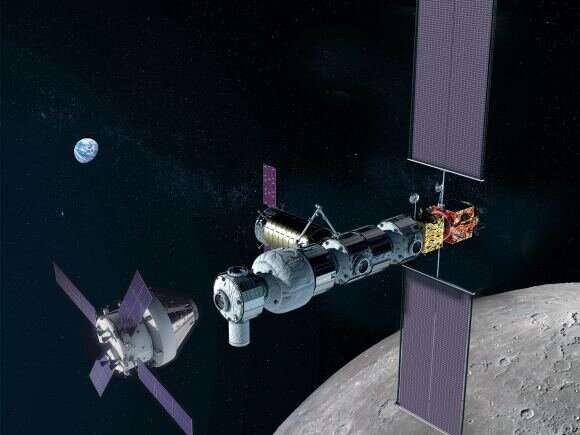Before this decade is over, NASA will send astronauts to the moon for the first time since the Apollo Era. As part of the Artemis Program, NASA also plans to establish the infrastructure that will allow for a “sustained program of lunar exploration.” A key part of this is the Lunar Gateway, an orbiting space station that will facilitate regular trips to and from the lunar surface. In addition to being a docking point for ships going to and from Earth, the station will also allow for long-duration missions to Mars.
The Gateway will have what is known in orbital mechanics as a “near rectilinear halo orbit” (NRHO), meaning it will orbit the moon from pole to pole. To test the long-term stability of this orbit, NASA will be sending the Cislunar Autonomous Positioning System Technology Operations and Navigation Experiment (CAPSTONE) to the moon by the end of May. This nine-month CubeSat mission will be the first spacecraft to test this orbit and demonstrate its benefits for the Gateway.
The CAPSTONE, a 12-unit CubeSat owned and operated by Advanced Space in Westminster, Colorado, is a technology demonstrator that will test the stability of a halo orbit and several crucial systems. The mission is scheduled to launch on May 31st (at the earliest), when a Rocket Lab Photon spacecraft bus will launch the CAPSTONE on its four-month journey to the moon. After a series of “clean-up” maneuvers that will insert the spacecraft into its orbit, the CAPSTONE will spend at least six months around the moon, firing its thrusters only occasionally to maintain its orbit.
This elliptical orbit will take CAPSTONE on a path that leads from one lunar pole to the other, tracing a constant oval pattern around the moon. It will take nearly a week to complete and will see the CubeSat traveling slowest when it is around the South Pole, where it will be at its farthest distance from the surface (76,000 km, 47,000 mi). When it reaches above the North Pole, the spacecraft will reach its peak velocity and make its closest pass to the surface at 3,400 km (2,100 mi).
Elwood Agasid, a deputy program manager of Small Spacecraft Technology at NASA’s Ames Research Center, explained in a NASA press release: “CAPSTONE will be precisely controlled and maintained and will benefit tremendously from the nearly-stable physics of its near rectilinear halo orbit. The burns will be timed to give the spacecraft an extra boost as it naturally builds momentum—this requires a lot less fuel than a more circular orbit would require.
“This orbit has an added bonus of allowing Gateway to have optimal communications with future Artemis missions operating on the lunar surface as well as back to Earth. This could unlock new opportunities for future lunar science and exploration efforts.”
These tests will validate the power and propulsion requirements for maintaining its orbit as predicted by NASA’s models, reducing logistical uncertainties. During its many orbits, the CAPSTONE will demonstrate the reliability of an innovative spacecraft-to-spacecraft navigation system. This system will measure the position of the CAPSTONE CubeSat relative to NASA’s Lunar Reconnaissance Orbiter (LRO)—which has been in orbit of the moon since 2009—without relying on ground stations.
To test this system, CAPSTONE will carry a second dedicated payload flight computer and radio, which will perform calculations to determine where the CubeSat is in its orbital path. The data obtained from this crosslink with the LRO will be used to measure how far apart the two satellites are and how quickly this distance changes. This peer-to-peer information sharing will allow mission controllers to evaluate CAPSTONE’s autonomous navigation software and determine the CubeSat’s position in real-time.
By validating this software, known as the Cislunar Autonomous Positioning System (CAPS), future NASA missions (as well as agency and commercial partners) will be able to determine the location of their spacecraft without relying on Earth-based tracking systems. This comes with the added benefit of freeing up bandwidth for ground-based antennas, allowing mission controllers to mission science data transmissions over the relatively routine tracking process.
NASA engineers also expect that the NRHO will allow them to station much larger spacecraft in orbit around the moon for about 15 years. This includes the Gateway itself and the spacecraft that will dock with it to refuel or conduct the next leg of their journey—i.e., the Orion spacecraft and the Deep Space Transport (DST). This is crucial to NASA’s “moon to Mars” mission architecture, which will involve sending crewed missions to the Red Planet in the early 2030s.
You may like to read:
Making sense of the nonsensical: Black holes and the simulation library












